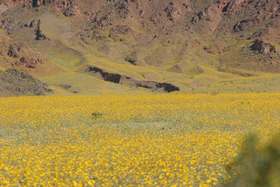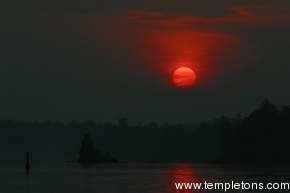Australia photo-log now available
Submitted by brad on Thu, 2005-11-10 02:42

I took a lot of photos in Australia, including of course, many panoramas. I've assembled some of the best panoramas.

You can see them in this gallery: Panoramas of Australia
When you take pictures on the road, you would love to have the latitude and longitude coordinates of each picture stored with it. Indeed, if combined with a digital compass clever software could even tell you what landmark was in the photograph. (ie. if standing on rim of Grand Canyon looking north, it's probably a picture of the canyon.)
Everybody is having a great time these days with the new and increasing satellite imagery found at Google Maps, finding their own houses and world landmarks.
I found a database built by a Keyhole user describing all the coordinates of the 788 Unesco World Heritage Sites. With a bit of perl magic I turned the Keyhole format into a series of web pages with links to Google satellite imagery.
I shoot with an SLR, and all lenses need a rear lens cap when not on the camera. Every SLR shooter knows the three-handed ritual. (Four handed if the Camera's not on a strap.) You take one lens off the camera. You pick another lens and remove the rear cap from it. Holding the old lens, new lens and rear cap and camera, you put the new lens on the camera, then put the rear cap on the old lens. (Or you put the cap on the old lens first, put it down and put the new lens on the camera.)

I have looked at a lot of image management programs, though not all of them, and been surprised that none match what I think should be a very common workflow. Sure, they all let you browse your photos and thumbnails of them, move them around, and rename them. And some let you do the functions I describe but usually doing them to a lot of photos is cumbersome because they only have a slow mouse interface or a poor keyboard interface.
Here's what I want to do, and right now use a combination of programs to make happen.
Many people have old, low resolution digital cameras lying around from the previous generation. Here's a good use to put them to, particularly if you have a housekeeper.
When somebody needs to put something away, and they don't know where you like it to go and have to figure out where, have them pull out the old digital camera and take a picture of the item and a picture of where it was put.
Then every so often you can pull out the images into an online folder, ideally with a thumbnail browser.
When you go out hiking and photographing, carrying a tripod can be too much, even my lovely carbon-fiber one. Besides, you want a good hiking stick on a hike anyway, you exercise more of your body. And most hiking sticks have a small tripod screw in them to use as a camera mount.
But here's a plan to make an all-out monopod/hiking stick kit to do a lot more than you can do with just the basic stick.
Soon as it was out, I bought the EOS D20. I sold my D60, which I had replaced my D30 with, so I am obviously generally pleased with Canon's line. The new camera has a lot over the D60 -- 2 more megapixels (or 3500 high for panoramas), much better low-light shooting ability with low-noise high-ISO, and fast shooting (5 frames/second for 25 frames.) It also has better focus, better controls, and an orientation sensor, something I've been wanting for a long time.
Well, a couple of weeks ago when I announced the phone project at Burning Man, I implicitly was linking to my new galleries for Burning Man 2004. However, let me officially announce those galleries now, plus the addition of a new gallery today.
I like fine camera lenses, but the best quality are very expensive. There are many things that are hard to do in a good lens -- you want a sharp image, of course, over the full flat plane. Over the whole image plane you want low flare, high contrast and low chromatic abberation (ie. red and blue focus in the same spot.) And you want low distortions.
Most camera lenses try to be "rectilinear." That means they try to make a straight line straight in the image. This isn't actually natural, due to perspective straight lines are not straight.
So I wonder if we might soon see a new lens where no effort is made to fix distortions or make the image rectilinear, and all effort goes into the other factors. You are thus expected, with every image, to do digital post-processing to get a non-distorted rectilinear image. That will mean some small loss of image quality at the edges of the image, but probably a less distorted image than ordinary lens physics can deliver -- and a lot less cost -- in exchange.
Of course, this would primarily be for digital cameras, but a film user could also use the lens if they planned to scan their film for digital processing, as most do these days.
Down the road, each lens might contain within it the specifics of its own particular distortions, and the camera might be able to fetch this and either process directly or store it with the image for post-processing. Indeed, the lens might be a cheaply made lens with distortions due to the poor quality elements, or it might be a fine lens with deliberate distortions. (I have wondered if some P&S digicams might be doing this already.)
Generally, getting a case to use a camera underwater is expensive. The case has to be custom made for the particular camera, and it has to be full of waterproof push-through button-pushers for all the major controls. Digital cameras have helped a lot, since they can shoot far longer on a "roll" and things like zoom are electronic. They also sell in enough volume that some cases have gotten down to reasonable prices.
 I took a trip to Toronto in part to see the very rare transit of Venus over the face of the Sun. I was lucky enough to get some great photos.
I took a trip to Toronto in part to see the very rare transit of Venus over the face of the Sun. I was lucky enough to get some great photos.
See my gallery of Venus Transit 2004 photos with notes.
We're not there yet, but let me write my notes about what future digital cameras might do to help us organize our huge collections of photos:
Copyright © 2025, Brad Ideas
Designed by Zymphonies
